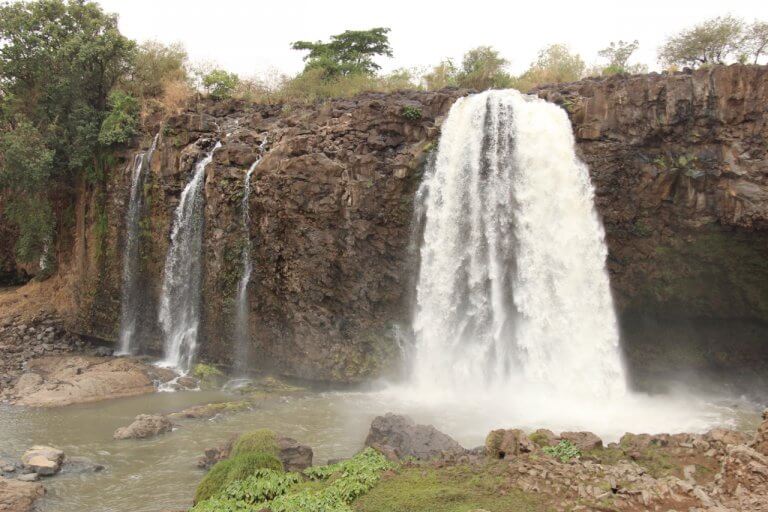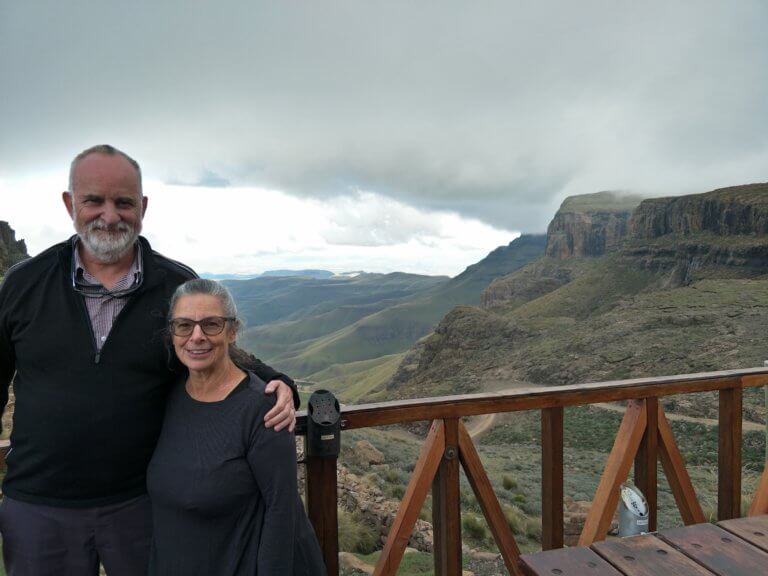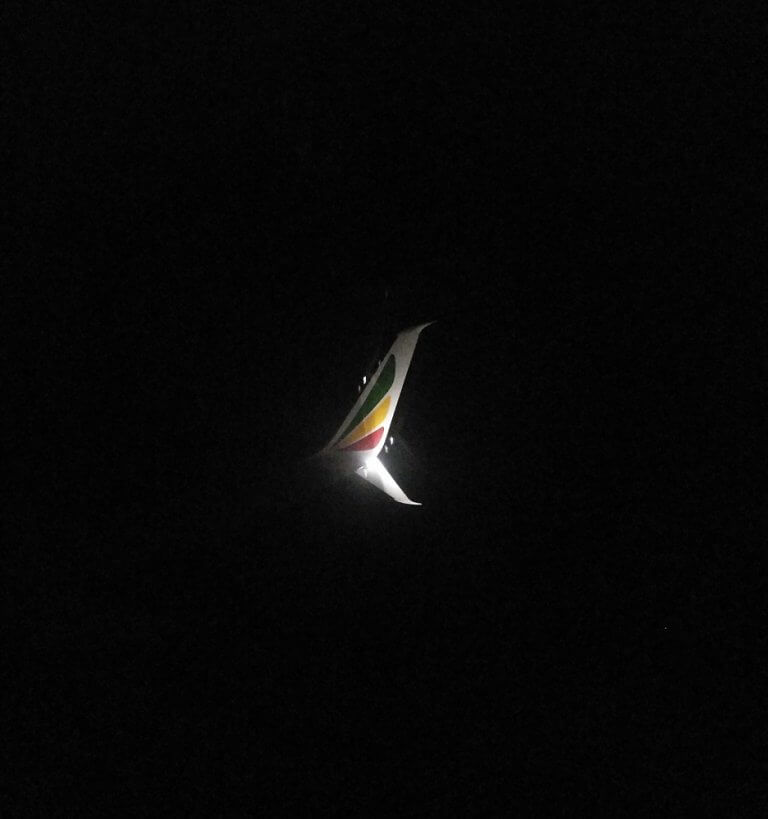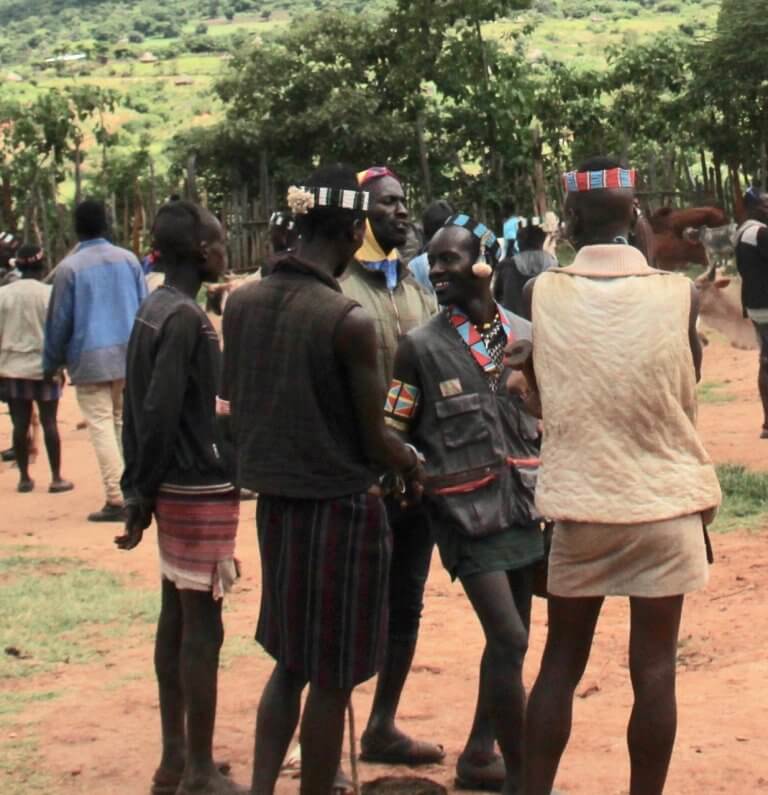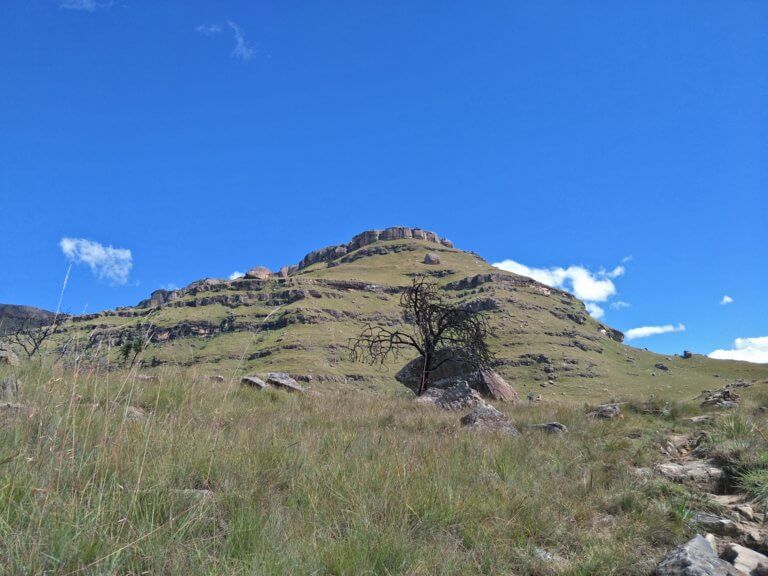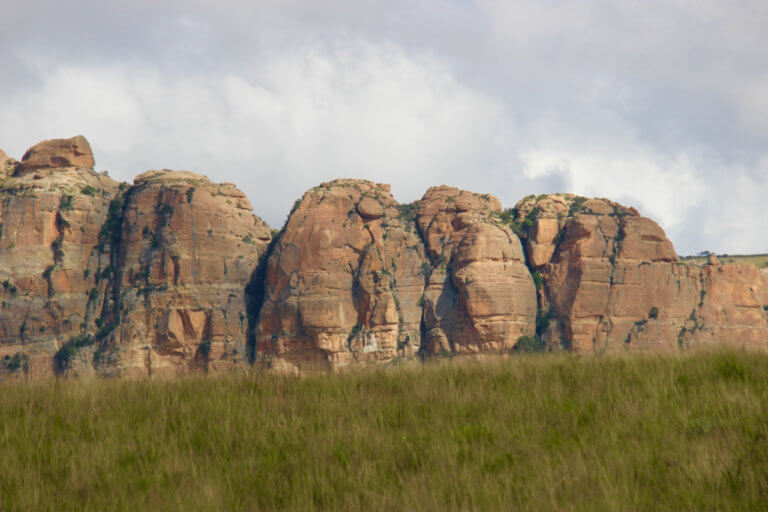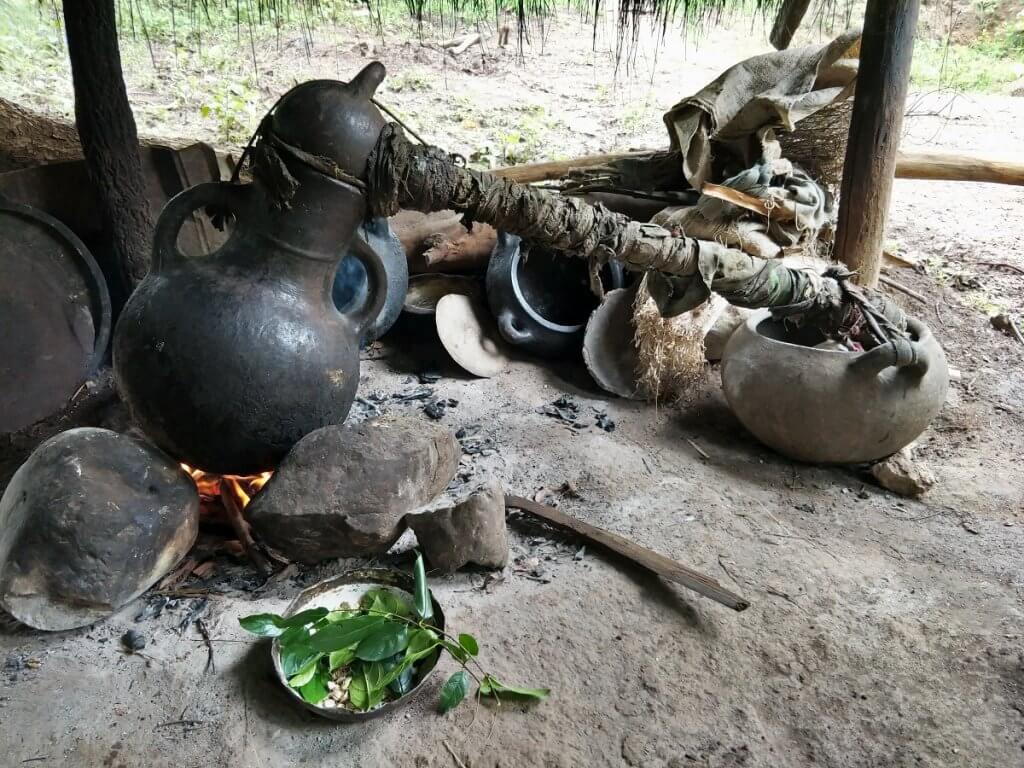
Day 44 May 25th 2018 Ari Village
Hard roads and hard thinking might just sum up Ethiopia.
It was and is hard to work out the rights and wrongs of visiting people in the Omo Valley. It is an intrusion on traditional life and culture, it provides income, it creates a culture focussing on tourism and photo taking, which also results in some tourists behave badly. In addition lives are being intruded upon by industry and development. On and on our discussion went with no clear answer either way.
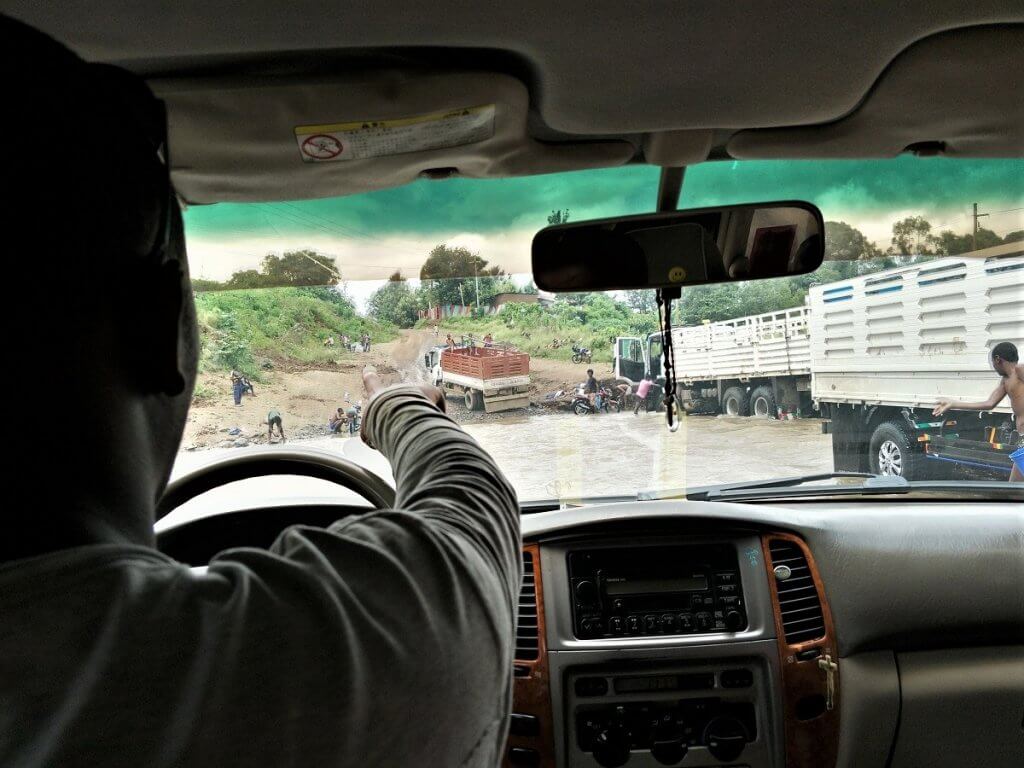
Today it eventuated that a visit to the Mursi people was not the best idea for our circumstances and we were not disappointed as this group are what much is written. Exploitation vs income. A visit with the Ari people felt more acceptable to our tourist-white-middle-class sensitivities – but was it!
The Ari are a major tribal grouping in the valley who focus on crops rather than animals.
This was a village visit different to the others. More about engaging with people whilst they worked.The over-riding theme was the simplicity of lifestyle particularly around the use of different technologies. This is not equating simple with being easy. Nor are we using technology in the sense of complicated electronics. Rather we mean the tools that are used in a pragmatic way to get the job done.
We started with a blacksmith whose main tool of trade was a set of hand worked bellows to get his fire hot enough to work metal. The solution was ingenious,he had a goat skin over a clay hole which he pumped air through a pipe system to heat up the embers.He then proceeded to beat a steel rod into a knife – which we felt compelled to buy.
At a small single woman distillery a system of clay pots and bamboo pipes produces a spirit closely aligned with gin when tasted.
And on to the pottery where a family of women, children and grandchildren produce pots and other necessary and decorative items for the village and also for trade with other tribes. The pots were produced from local clays shaped by hand (not a wheel). Fired in simple fire pit not a kiln. Again simple solutions that work.
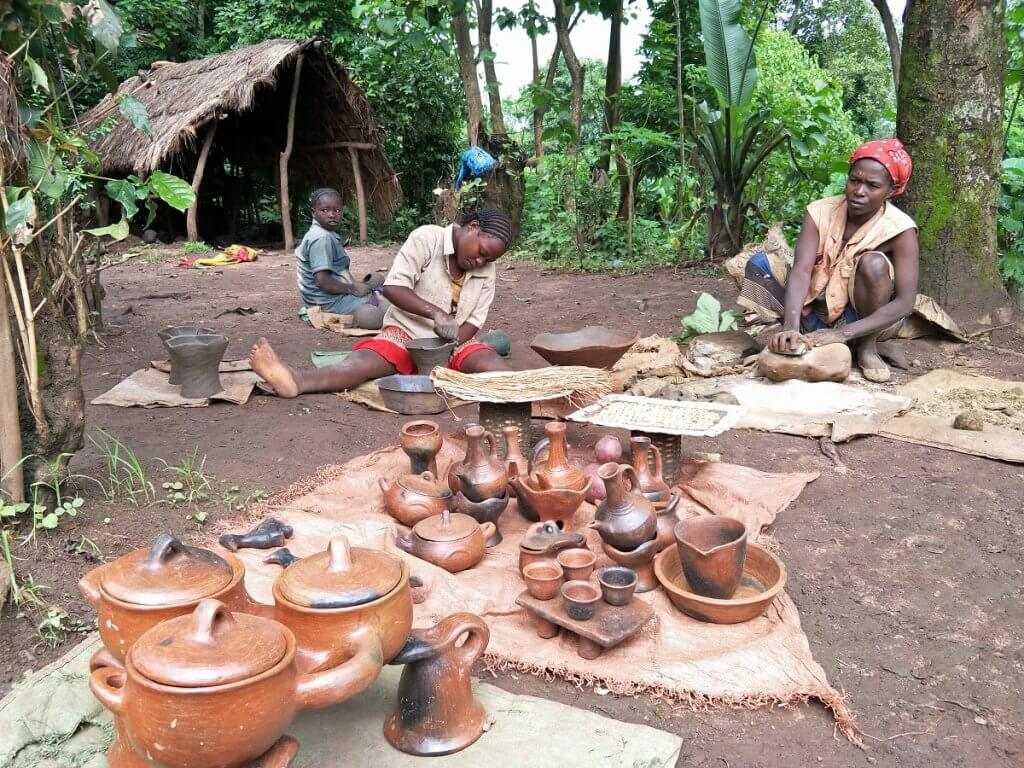
Morning tea time Ari style. As we sat with a family where the mother produced a tea from coriander, garlic, onion, chilli and ginger. Very spicy, tasty and cleansing – apparently good for colds. We met the mother, grandmother, children and a young boy with a severe disability lying on the front of the hut – part of life,

Finally in a small hut with a fire, to see Injera made on a beautiful pottery platter. Mel tried pouring it out on the large flat hot plate – it turned out to be harder than it looked to cook and very tasty to eat.

All in all a great way to learn. It seemed like people were happy to have us around and were pleased we were interested. There is no doubt that cultural norms are different but we have learned that it doesn’t make them better or worse-just different.How people adapt to their living conditions is their life and shouldn’t be judged by other cultures appropriate to a completely different context.We found the whole experience engaging and very different to our first village visit.
After lunch headed to Turmi and the Basku Lodge. Even after a few days we were able to identify people from different tribes by their dress and appearance. Lots of people from the Bana tribes on our way back.

